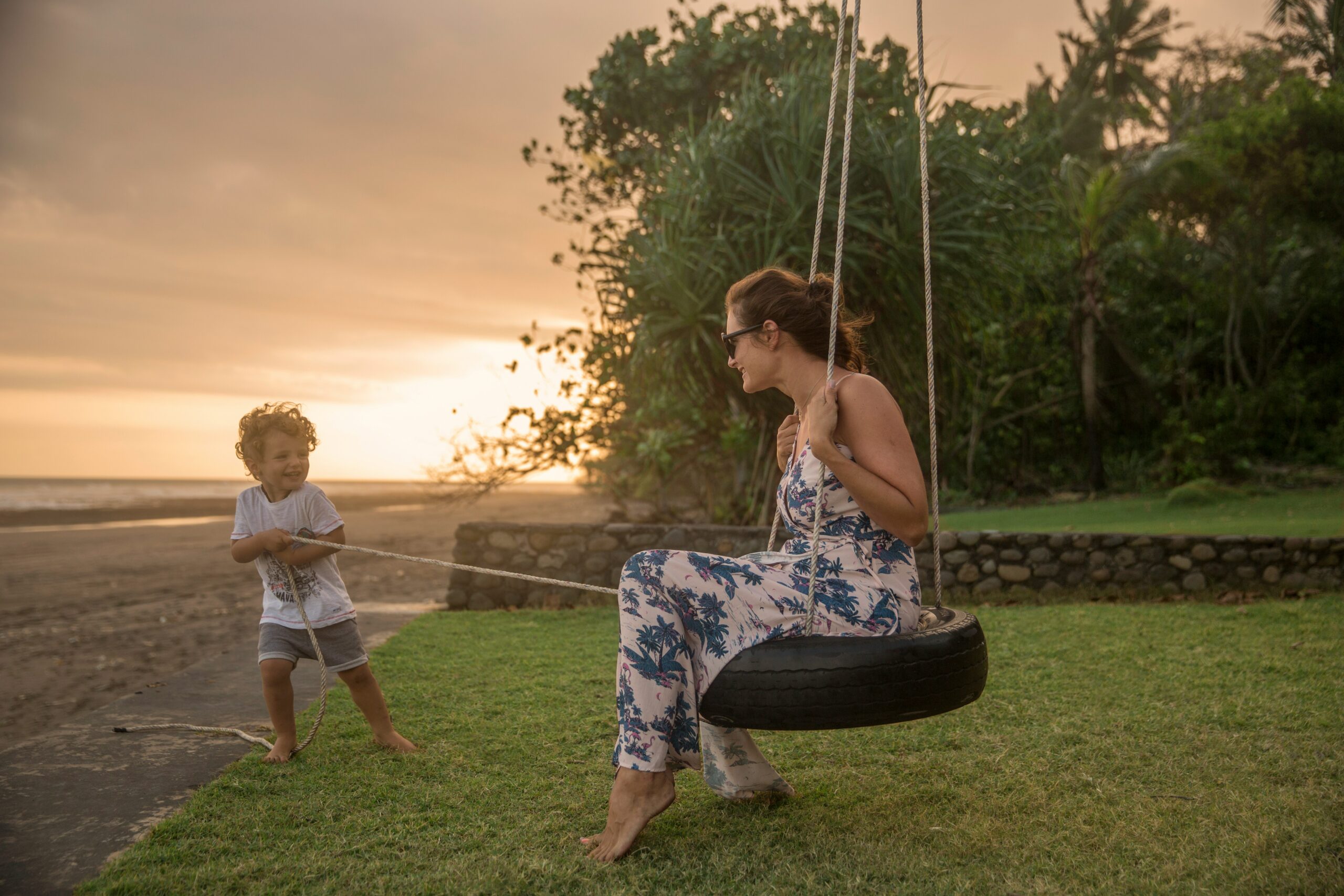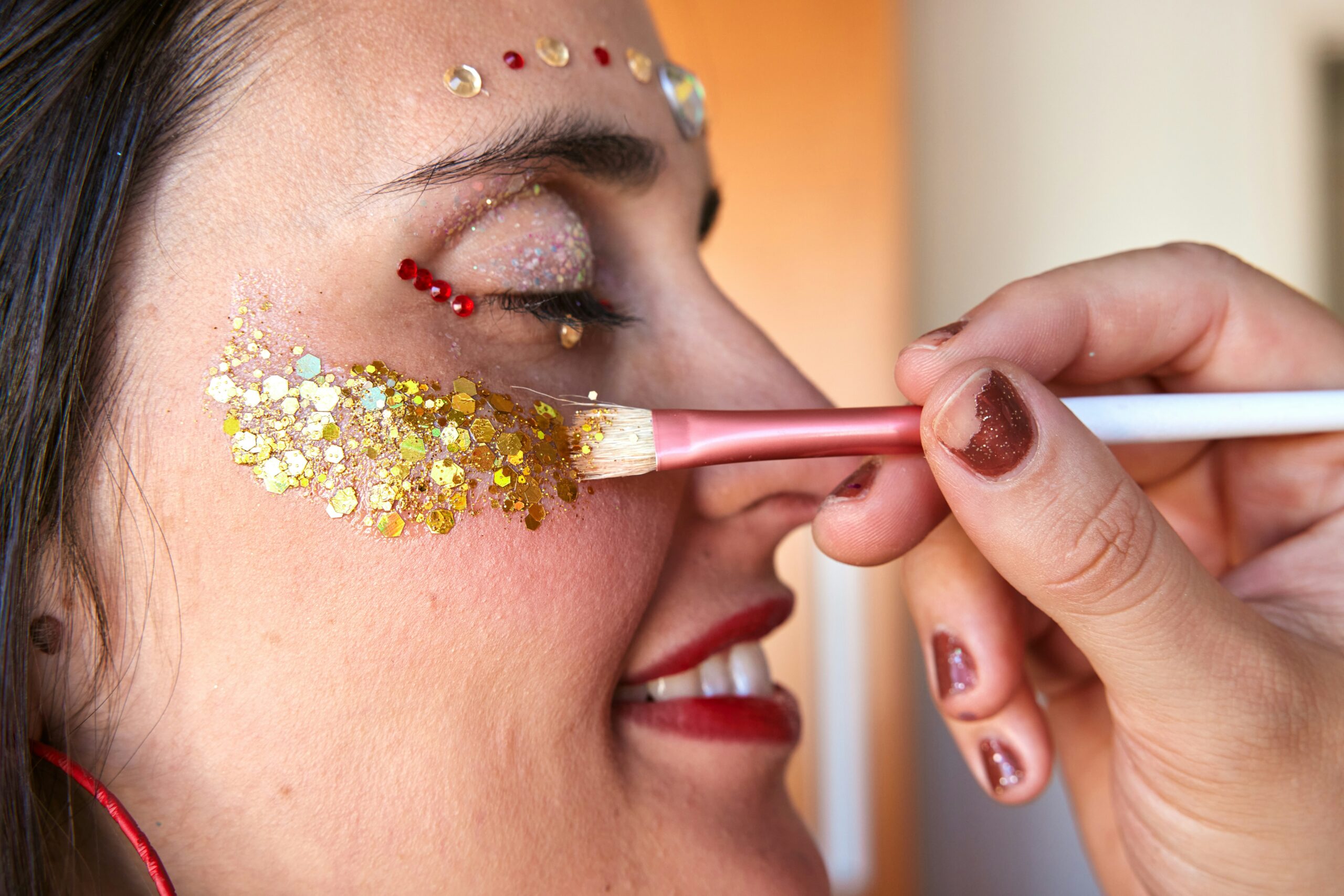I breezed through life with a bouncy ponytail, shoulders back and a can-do attitude. Straight A’s, athletic achievements, and a vibrant social life were all par for the course. College followed seamlessly, and then, in a bold move, I founded and sold a company nestled in the Swiss Alps. So, when it came time to have kids, I figured, “I’m good. Parenting will be just like my life—manageable, controllable, and a guaranteed win. I’ve got this!”
Why, then, was it so hard?
Why did I find myself yelling when I had never yelled before? Why did I inadvertently shame my kids by telling them I was disappointed, sad, or angry about something they did, hoping to get them to behave better? Why did I have to ‘show’ them how angry I was, which would have felt scary, not safe?
The answer, I hated to admit, was because my childhood shaped my reactions as a parent in ways I hadn’t realized.
My father was a brilliant trial lawyer. My mother was beautiful, hard-working and kind. We lived in an idyllic house on the hill, rode our own horses, and played tennis at the club. My father was also an alcoholic, paranoid, abusive and bipolar. My mother was tolerant, overwhelmed and scared. Our home life was one where chaos was the norm, and there were many times when my siblings and I simply couldn’t count on our parents.
Every afternoon, after the school bus pulled away, we would race up the long driveway, eager for a snack. One day, we found my dad at the kitchen table, disheveled and smelling of whiskey, sawing the shotguns we had for protecting livestock in half. He explained that he was worried he might shoot all of us.
In my childlike confusion, I did the only thing that made sense—I went to get a cookie.
When I was eleven, my father took his life. I found out when a neighbor explained why so many people were delivering food and flowers. Seeking comfort, I wandered over to see what treats had arrived.
Sure, my trauma is clear because people know about “big T” trauma (life-altering events such as rape, accidents, deaths, war). Yet so many moms have unknowingly experienced trauma but don’t realize it, because our culture tends to overlook the lived experience of “little t” traumas.
Traumas are not measured by what happens on the outside.
Anything involving fear, confusion, or safety can be too big and too complex for a young child’s mind to process on their own: birth of siblings, a divorce, scary things, big moves, parents just fighting, loss of a grandparent or death of a pet. And these unconscious, unprocessed emotions are the foundation for the ‘baggage’ we often carry into adulthood.
Research shows that these early experiences deeply shape our reactions and behaviors as parents. And the sad truth is, parenting is often the catalyst to bring unresolved issues, our ‘baggage’, from our childhoods to the surface. When I found myself yelling or shaming my kids, it wasn’t just about their behavior—it was my unhealed wounds from the past influencing my reactions in the present.
I was triggered.
You may also have heard the term ‘buttons being pushed.’ As far as I’m concerned they both lie on the same spectrum: buttons being pushed is a reactive response to the challenges of parenting (we all have fears and sensitivities) whereas being triggered is a whole body response, you’ve “triggered” the past trauma. Either way, our brain puts us into a state of panic and we lose access to our thinking brain.
Have you ever experienced a child—4 or 14 years old— pushing back with a “No” or a “Why” when you’ve asked them to do something? What often happens is that we have an automatic response: we react, get tense, search for what to say. We’re focused on turning their ‘no’ into a ‘yes’, gearing up for the fight ahead and suddenly we are arguing or threatening or punishing. Anything to get the behavior to stop!
Our limbic system is triggered and our brain has flipped into survival mode, giving us three options: fight (yell, punish, threaten), flight (“I’ve had it! Fine!”), or freeze (give in, give up).
Personally, I found myself most often torn between fighting and fleeing, reacting with either anger or avoidance.
So, first, I had to become aware of my unconscious triggers and bring them into my conscious awareness. Neurologically speaking, this means getting my brain to think about itself. What were my triggers? What were my biggest struggles? I had to train myself to know when I was being triggered so I could consciously decide on my response. Was I “fixed” overnight? Absolutely not, but once I started, I only got better.
The process of confronting my triggers and emotional responses was not easy.
It required a level of introspection and honesty that I had never quite engaged in before, but, as Junot Díaz said, “. . . you can never run away. Not ever. The only way out is in.”
Secondly, I realized that when my brain was triggered, being a safe and supportive parent wasn’t intuitive; I didn’t know what I was supposed to do. So, I dove into neuroscience, mindfulness, and child development to understand the ‘why’ behind parenting and what I needed to say in those moments of panic.
And then one day I had a minor, but seminal, epiphany.
Sometimes I would take just one of my daughters to get a fun drink at a coffee shop. On this day, this particular daughter was mad because I had promised her that her little sister couldn’t use her lacrosse skirt–and then I gave it to the younger sister anyway. It was my mistake; she was right to be angry. And she was making a show of it. But I was overwhelmed and irritated at her for robbing our time of any charm or bonding. My patience was waning quickly.
But on that particular day in that specific moment, I began to think about my little girl and her unfortunate behavior in the context of my parenting research.
I had read many times, but not coincidentally also the day before, about children’s behavior being an overt manifestation of the bigger issues lurking underneath but it always seemed so hard to figure out what those were. And what was I supposed to do with them anyway?
So on that day, I decided to get curious, really curious, about her story. I opened my mind and tried to bite my tongue. I asked questions that led her to opening up in a way I’d rarely, if ever, seen before. The emotional release that came along with it was visible. Her eyes brightened, her tone changed, and the tension dropped from her shoulders.
And then something remarkable happened. Over the next few days, this child—the one who was usually the source of my greatest frustration as a parent—behaved better. She emptied the dishwasher without being asked. She left her sisters alone in situations where normally she’d push buttons. Her step was just a little bit lighter. She was just, well, more cooperative and kind. The transformation was subtle and it didn’t last forever, but the change was enough for me to take notice.
You’re probably wondering, “Has this mother never spoken to her kids before?”
Of course I had! But I was constantly in survival mode and often triggered: solve the problem, finish the meal, get them to sports practice, pick a side, end the meltdown, get them to listen . . . And now, as I started to give slightly more forethought to my conversations and apply something I’d read or otherwise learned, while the words didn’t always feel natural, by and large the end-state would pleasantly surprise me: better behavior, more cooperation, a calmer household.
That’s when I had my “aha” moment. Parenting is millions of moments—and each one offers us an opportunity to connect and grow with our children.
I call these opportunities Micro-Moments.” They are small, intentional actions and interactions that, despite their brevity, have a profound impact on our children’s development and our relationship with them.
I didn’t have to implement a whole new system. Instead, whenever I encountered a small moment that might have frustrated me (“Why is it taking you so long to get dressed?”), confused me (“Can’t you just be nicer to your sister?”), or infuriated me (“You need to empty the dishwasher before you go to your friend’s house!”),
I began to identify opportunities to be self-aware, to connect, and to help nurture in my kids the characteristics to thrive in today’s world. Connection, safety, limits and boundaries, building confidence: they can all be built in moments.
I didn’t need to become a different person; I could continue as the slightly crazy, frenetic, type A, whirlwind mom that I was!
But wait—this is not about enjoying every moment or teaching every moment or even noticing every moment. Some moments are meant simply to be survived.
So, start small.
You know that feeling of parenting being a never-ending cycle of ensuring that your kids’ homework is done and they’ve eaten their vegetables and their cleats are in the car?
It’s so easy to get caught up in the ‘responsibilities’.
“You forgot your shoes – go get them before you have breakfast.”
“How did your shirt get so dirty at school today?”
Our brows furrow, our forehead wrinkles, our jaw tightens subtly. We think our affection and our deep love are obvious because we’re caring for them; we care that they get their shoes so getting out the door isn’t impossible, we care that their cute shirt is now dirty.
They latch onto our critical face “What’s wrong now?”
This is a moment—and an opportunity. As Toni Morrison said, “When a kid walks in the room, your child or anybody else’s child, does your face light up?”
What about taking one moment to let your face speak what’s in your heart – when they show up, let your face say that you’re glad to see them. This tiny gesture speaks volumes.
Look at them, eye-to-eye, and smile. Show them you are happy to see them. That’s it! You might wonder, “Will this truly make a difference?”
Yes!
This tiny moment can have a profound impact. Brené Brown emphasizes that true belonging requires us to believe in ourselves enough to share who we really are and trust that we are accepted. When your child sees your face light up, they feel that sense of belonging. They feel valued, loved, and appreciated just for being themselves.
And let’s do the math. At a minimum you greet your child once or twice a day, let’s call it 700 times a year. When they’re babies, it’s natural: I mean how adorable is a two-year-old?
But suddenly they’re five and how the heck did they get so bossy? So, between 5 and 15 you will have expressed to them—at a minimum—7,000 times that, despite the chaos and the corrections, they are seen, they are loved, and they truly belong.
A moment feels so much more doable than an overhaul.
Reflecting on my own journey, I realized that the chaos and unpredictability of my childhood had deeply influenced my parenting. But through conscious effort and the practice of implementable in-the-moment exchanges, I’ve been able to create a more supportive and stable environment for my children—something I wished for in my childhood.
By addressing my past and transforming my approach, I’ve not only changed my relationship with my kids but also rewritten the narrative of their futures, one little moment at a time.
Author
-

Mary Willcox Smith is a Parent Coach, Speaker, and Author of the book, Small Moments, Big Impact: The MicroStep Method for the Overwhelmed Parent. For the past twenty-five years, she’s experienced the joys and tribulations of raising four daughters born within just five years. Mary believes that empowering and guiding parents with young daughters, she can contribute to reversing the rising tide of teen and young adult anxiety and depression. When she's not keeping up with her husband and four daughters, Mary loves Bikram Yoga and hiking as well as perfecting her homemade granola and sourdough.
View all posts




